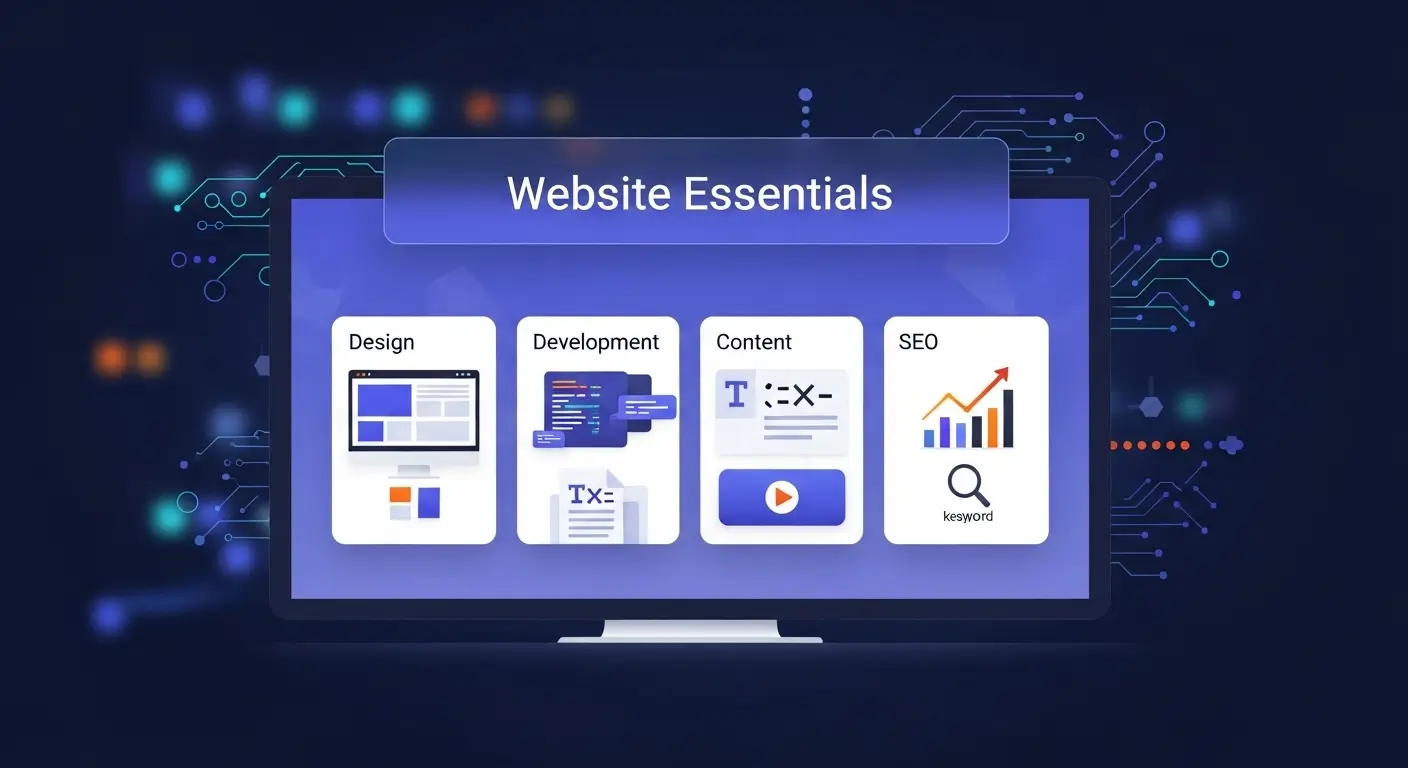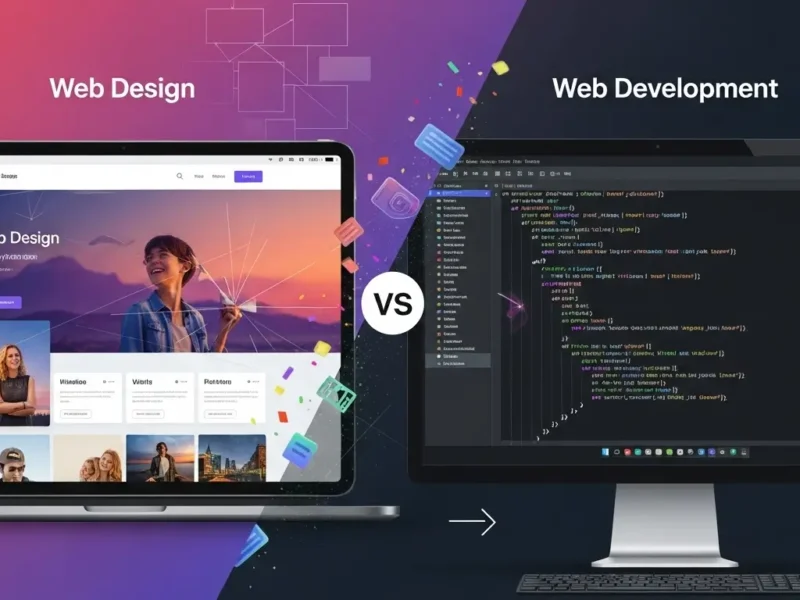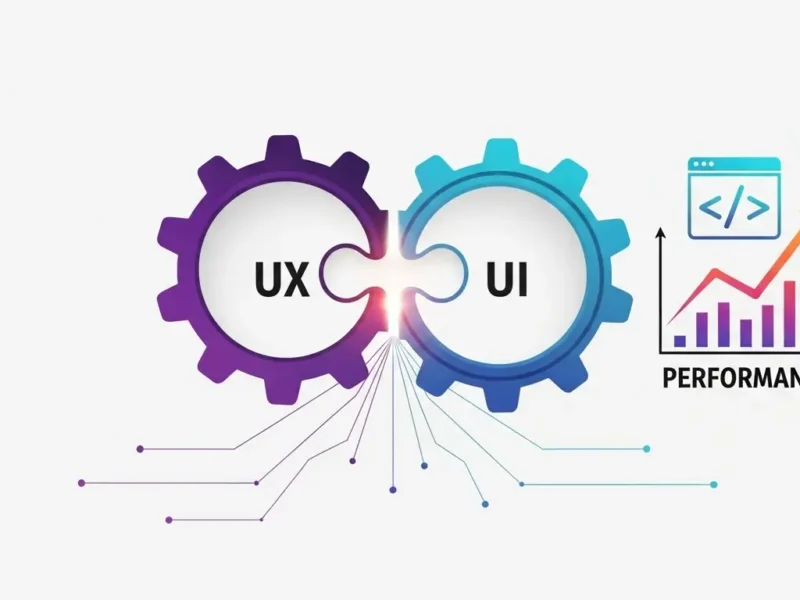In today’s hyper-connected world, your website isn’t just an online brochure; it’s the digital cornerstone of your brand, a powerful sales engine, and often the very first interaction potential customers have with your business. Yet, building a truly successful website goes far beyond simply “having a presence.” It requires a strategic, multifaceted approach that meticulously weaves together four critical elements: design, development, content, and SEO. Neglect any one of these pillars, and your entire digital edifice could crumble, or worse, never even be found.
This comprehensive guide will demystify the website essentials that drive online success, exploring how these interconnected components work in harmony to create a compelling, high-performing platform that not only attracts visitors but also converts them into loyal customers.
1. The Art of First Impressions: Compelling Website Design
Your website’s design is its handshake, its storefront, and its voice, all rolled into one. It’s the visual and interactive experience that shapes a visitor’s perception of your brand within seconds. But website design is more than just aesthetics; it’s a strategic tool for user engagement and trust-building.
Key Elements of Effective Website Design:
- User Experience (UX): This is paramount. A good UX ensures your site is intuitive, easy to navigate, and pleasurable to use. Think clear calls-to-action (CTAs), logical information flow, and minimal clicks to find information. A frustrated user is a lost user.
- User Interface (UI): While UX is about how it works, UI is about how it looks. This includes visual appeal, consistent branding, appealing color palettes, readable typography, and high-quality imagery. A clean, modern UI instills professionalism and credibility.
- Responsiveness & Mobile-First Design: With mobile devices accounting for over half of all web traffic, your website must look and function flawlessly on every screen size – from desktops to tablets and smartphones. Google prioritizes mobile-friendly sites, making this a critical website essential for SEO.
- Brand Identity Integration: Your website should be a seamless extension of your brand. Consistent logos, colors, tone, and messaging across all pages reinforce recognition and build a cohesive brand experience.
- Information Architecture (IA): This refers to the structural organization of your website’s content. A well-planned IA ensures visitors can easily find what they’re looking for, reducing bounce rates and improving conversion paths.
Why it Matters: A well-designed website builds trust, establishes credibility, reduces bounce rates, encourages longer visits, and ultimately, guides users towards desired actions. It sets the stage for everything else.
2. The Engine Under the Hood: Robust Website Development
While design dictates what your website looks like, website development dictates how it functions. This is the technical backbone – the coding, frameworks, and infrastructure that bring your design to life and ensure a smooth, secure, and high-performing experience. Without robust development, even the most stunning design can fall flat.
Key Elements of Robust Website Development:
- Platform & Framework Choice: Selecting the right content management system (CMS) like WordPress, Shopify, or a custom build is crucial. Each has its strengths, impacting scalability, security, and ease of maintenance. Your choice should align with your business goals and technical needs.
- Performance & Speed Optimization: Page load speed isn’t just a luxury; it’s a necessity. Slow websites frustrate users and negatively impact your search engine rankings. Developers optimize code, compress images, leverage caching, and minimize server response times to ensure lightning-fast performance. This is a vital website essential for both user experience and SEO.
- Security & Data Protection: In an age of increasing cyber threats, website security is non-negotiable. This includes implementing SSL certificates (HTTPS), regular backups, secure coding practices, protection against malware, and robust firewalls. Trust is built on security.
- Scalability: As your business grows, your website should be able to grow with it. Good development ensures your site can handle increased traffic, additional features, and expanding content without performance degradation or needing a complete overhaul.
- Accessibility: An accessible website ensures that people with disabilities can perceive, understand, navigate, and interact with it. Adhering to Web Content Accessibility Guidelines (WCAG) not only broadens your audience but also reflects a commitment to inclusivity.
- Clean, Efficient Code: Well-written, semantic code is easier to maintain, debug, and is more understandable for search engine crawlers. This contributes directly to better performance and SEO.
Why it Matters: Strong development ensures your website is reliable, fast, secure, and functional. It supports optimal user experience, facilitates seamless updates, and provides a stable foundation for all your digital marketing efforts.
3. The Voice of Your Brand: Engaging Website Content
If design is the looks and development is the mechanics, then website content is the soul of your website. It’s the information, stories, visuals, and calls-to-action that communicate your value, engage your audience, and guide them towards conversion. Compelling content answers questions, solves problems, and establishes your authority.
Key Elements of Compelling Website Content:
- Strategic Content Planning: Before writing a single word, define your target audience, their pain points, and your business objectives. Develop a content strategy that outlines the types of content (blog posts, videos, infographics, product descriptions, case studies), topics, and tone that will resonate.
- Keyword Integration (Natural & Relevant): While we’ll delve deeper into SEO, it’s crucial here: your content must naturally incorporate keywords that your target audience uses when searching. Avoid keyword stuffing; focus on providing genuine value around those topics.
- Value Proposition & Problem Solving: Every piece of content should offer value. Does it educate? Entertain? Solve a problem? Clearly articulate your unique selling propositions and demonstrate how your products or services benefit the user.
- Clarity, Readability & Scannability: Use simple, direct language. Break up long blocks of text with headings (H1, H2, H3), subheadings, bullet points, and numbered lists. Short paragraphs, bolding, and whitespace enhance readability and allow users to quickly scan for key information.
- Diverse Content Formats: Don’t limit yourself to text. Incorporate high-quality images, videos, infographics, testimonials, and interactive elements to keep visitors engaged and cater to different learning styles.
- Strong Calls-to-Action (CTAs): What do you want your visitors to do next? “Learn More,” “Shop Now,” “Get a Quote,” “Subscribe” – clear, concise, and strategically placed CTAs guide users through the conversion funnel.
- Freshness & Regular Updates: Search engines favor websites with fresh, relevant content. Regularly updating existing content and publishing new, valuable pieces signals to search engines that your site is active and authoritative.
Why it Matters: High-quality content attracts organic traffic, builds credibility and trust, nurtures leads, positions you as an industry expert, and ultimately drives conversions. It’s how you truly connect with your audience.
4. The Visibility Amplifier: Strategic Website SEO
You can have the most beautiful, functional, and content-rich website in the world, but if no one can find it, it’s like a billboard in the desert. This is where website SEO (Search Engine Optimization) comes in. SEO is the ongoing process of optimizing your website to rank higher in search engine results pages (SERPs) for relevant queries, driving organic (unpaid) traffic to your site.
Key Pillars of Strategic Website SEO:
- Keyword Research: This is the foundation. Identify the words and phrases your target audience uses to search for information, products, or services related to your business. Tools help uncover high-volume, low-competition keywords.
- On-Page SEO: Optimizing individual web pages to rank higher and earn more relevant traffic. This includes:
- Title Tags & Meta Descriptions: Crafting compelling, keyword-rich snippets that appear in search results.
- Header Tags (H1, H2, H3): Structuring your content logically with relevant keywords.
- Content Optimization:Ensuring your content is comprehensive, authoritative, and naturally integrates target keywords.
- Image Optimization: Using descriptive file names and alt text for images.
- Internal Linking: Creating a logical link structure between relevant pages on your site.
- Technical SEO: Ensuring search engines can easily crawl, interpret, and index your website. This includes:
- Site Speed: As mentioned in development, critical for SEO.
- Mobile-Friendliness: Another dual-purpose website essential.
- Crawlability & Indexability: Ensuring search engines can access and list all important pages.
- XML Sitemaps & Robots.txt: Guiding search engines effectively.
- Structured Data (Schema Markup): Helping search engines understand the context of your content.
- Off-Page SEO: Activities performed outside your website to improve its ranking. The most significant factor is:
- Backlink Building: Earning high-quality, relevant backlinks from authoritative websites. These act as “votes of confidence” for your site.
- Social Signals: Although not a direct ranking factor, social shares can increase visibility and indirectly lead to more backlinks.
- Analytics & Monitoring: Regularly tracking your website’s performance using tools like Google Analytics and Google Search Console. This data informs your SEO strategy, helping you identify what’s working and where to improve.
Why it Matters: Strategic SEO is about long-term, sustainable visibility. It drives highly qualified organic traffic, reduces reliance on paid advertising, boosts brand authority, and ultimately, delivers a strong return on investment (ROI).
The Interconnected Web: A Holistic Approach
It’s crucial to understand that these four website essentials – design, development, content, and SEO – are not independent silos. They are deeply intertwined and mutually dependent. A stunning design needs robust development to function. Compelling content needs SEO to be discovered. And good SEO relies on a technically sound, well-designed site with valuable content to rank.
Ignoring one impacts the effectiveness of all others. A holistic approach, where these elements are planned and executed in concert, is the only path to a truly successful and sustainable online presence. Often, partnering with an experienced web development company can streamline this complex process, ensuring all four pillars are robustly supported.
Ready to Build Your Unstoppable Digital Foundation?
Building a website that truly performs is an ongoing journey, not a one-time destination. It requires continuous attention to all these website essentials. Are you confident your current online presence is optimized for every stage of the user journey, from discovery to conversion?
Don’t leave your digital success to chance.Evaluate your website today through the lens of design, development, content, and SEO. If you’re looking to elevate your online presence, attract more leads, and convert more customers, we’re here to help.
Take the next step: Contact us for a comprehensive website audit and strategy session to unlock your site’s full potential. Let’s build something exceptional together!



